Caught in the Study Web
Exploring Gen Z’s Ambitious and Anxiety-Fuelled Pursuit of Straight A’s Across YouTube, TikTok, Discord, and Twitter

In late 2020, a 10-hour loop of a song from Mario Kart titled “Coconut Mall” started blowing up on Youtube. Initially uploaded as a joke by Gliccit in 2017, the video never saw more than 39 views a day in that calendar year.
But on October 29, 2020, “Coconut Mall” was viewed 39,959 times. As of late April 2021, the video has been played for a collective 478,941 hours. Why did a relatively obscure video featuring a song from 2008 MarioKart Wii get such a significant traffic boost?
The “Coconut Mall” video exploded when it got pulled into what I call Study Web.
Study Web is a vast, interconnected network of study-focused content and gathering spaces for students that spans platforms, disciplines, age groups, and countries. Students seeking motivation, inspiration, focus, and support watch livestreams of a real person at their desk, studying; videos in the Study With Me genre are simultaneously streamed by thousands of students. Or they join Discord communities, where they search for “study buddies,” share studying goals, and compete—by studying—for virtual rewards. On Twitter, they swap study tips and seek out study “moots,” or mutuals, under the hashtag #StudyTwit.
In the case of the “Coconut Mall” video, a TikTok study influencer recommended the video as great focus music, under the hashtag #StudyTok. Tens of thousands flocked to watch, chat, and, of course, study:
- “I'm back again because I have a big test to study for, a bunch of busy work due tomorrow, and graphing math homework. Here we go.”
- “POV: you waited too long to do that big project so you are rushing to finish knowing that you will fail regardless”
- “just wrote 3 essays and took 2 quizzes listening to this... thank god for coconut mall.”
The Study Web is a constellation of digital spaces and online communities—across YouTube, TikTok, Reddit, Discord, and Twitter—largely built by students for students. Videos under the #StudyTok hashtag have been viewed over half a billion times. One Discord server, Study Together, has over 120 thousand members. Study Web extends far past study groups composed of classmates, institution specific associations, or poorly designed retro forums discussing entrance requirements for professional programs. It includes but transcends Studyblrs on Tumblr that emerged in 2014 and eclipses various Reddit and Facebook study groups or inspirational images shared across Pinterest and Instagram. Populated mostly by Gen Z and the youngest of millennials, Study Web is the internet most of us don’t see, and it’s become a lifeline for students from junior high to college.
Much of Study Web parallels more adult and professional spaces that have emerged in the last decade—revered influencers, a bend towards materialism, and inspiration over analysis. But it’s also a reflection of the realities of young people today that most of us miss.
Why are millions of students from around the world spending countless hours online, tangled in the Study Web of their own design?
In the highly-pressurized pursuit of the academic goals they’ve been told will help them succeed, students venture into Study Web to feel less alone; assuaging anxiety with inspiration, pursuing perfect grades through para-social productivity, and quelling fears about the future with cyber friends. As Zoom school has left young people even more desperate for connection and support, they’re turning to Study Web—post-to-post, DM-to-DM, and webcam-to-webcam—to find it.
I dove into Study Web to see how it works.
YouTube
If you’re a mid-millennial or older, and once-upon-a-time used YouTube for studying and learning course material, you might remember Khan Academy videos explaining the Krebs cycle or a kind stranger from India balancing redox equations.
These tutoring style videos are generally one-off watches where students land to grasp a concept and rarely return. While they exist in the same universe, they feel worlds apart from the fresher crop of content on the YouTube section of Study Web where students return again and again, seeking comfort and counsel from their favorite creators, regardless of what they’re studying or where they go to school.
Study Creators
Every online world, from Tech Twitter to Linkedin, has its influencers—Study Web is no exception. On YouTube, study creators with thousands to millions of subscribers focus less on subject matter and curriculum, instead sharing productivity tactics and study techniques. A key feature of these videos is aesthetics—from the right ruler to the perfect pen. Lighting is an important part of a study creator’s vibe: candles, string lights, salt lamps, and neon lights are all common fare. Most creators are students themselves, grappling with many of the same pressures that they’re guiding their audience through — namely, a seemingly endless workload and a schooling system that drives youth to equate academic achievement with self-worth.
On her YouTube channel The Bliss Bean, a creator named Beatrice provides advice on leveraging active recall and using Anki for spaced repetition (a different digital flash card tool is the video’s paid sponsor). A student herself, she imparts the importance of effective study habits:
“...instead if you set yourself little goals, if you set yourself little time limits and you implement techniques to help you get stuff done within those time limits, then you will win at school and at life.”
Another study influencer, Berkeley student Angelica Song recommends finding an effective note-taking system and staying off your phone during long classes. She lends advice on how to think about the much coveted student goal, straight A’s:
“...yes grades are not everything. GPA is not everything. I know that. But sadly a lot of the industry still today heavily rely on what grades you get: medical school, law school, grad school. And so it is important that you kind of do the best or like, win the game in the system in this academic and educational institutional ecosystem thing we have going on. We have to win the simulation! We're all in this simulation and then we have to win it.”
This emphasis on “winning” the game of exams and assignments leaves out the implicit idea that doing poorly is to lose—to be a loser—and not just at school. Luckily, the right study tip or academic advice is just a recommended watch away. YouTube’s content in the genre seems endless: videos on setting up your workspace, the science behind active recall, and how to implement memorization tricks like the mind palace. There are techniques taught on how to focus with pomodoros or how to create a study schedule. 10 hacks to get a 4.0, study tips from a college graduate, and brutally honest advice on getting good grades. The comments from students surfing the Study Web under these videos reveals a mix of gratitude, hope, and anxiety:
- “I’m failing class so this helped me extremely good ty ❤️”
- “does anyone just gets anxious when a video writes ‘study smarter, not harder’ and end up watching it eventhough its the same technique? just me?”
- “Thank you so much for making this wonderful video! I’ve been struggling with my grades now a days and I think this would really help me!”
Lo-fi + Live Streams
Students aiming to move past aspiration can use one of the oft recommended techniques to actually study: the right music, specifically lo-fi. Lo-fi, or “low fidelity,” music is under-produced; it feels warm, calming, and homemade, demanding little attention or active listening, making it a go-to for studiers.
One evening, I navigated to a frequently mentioned study tool, Lofi Girl, a music YouTube channel with 8.4M subscribers, and selected a video titled "lofi hip hop radio - beats to relax/study to." I was plugged into Study Web. Joining me were 38,892 other live users, listening along. I peered at the chat that was moving too quickly to follow:
- “What grade is everyone in?”
- “Can’t wait for algebra to be over!”
- “Anyone speak Russian?”
- “Home School cause of Corona”
- “today i failed the exame, i'm depressed”
Started in 2017 as “Chilled Cow,” Lofi Girl is one of the most popular focus music channels on YouTube. Aside from community members leaving comments on live streams, the Lofi Girl brand includes a study Discord server with over 500K members, playlists on Spotify and Apple Music, a Subreddit, and social media profiles across most major platforms. Whether or not lo-fi music truly helps you study better is debatable, but the science is largely irrelevant to the tens of thousands of listeners who join live streams each day to hear hours-long mixes of different artists evoking a similar sound: a blend of bland, chill, premium mediocre.
Lofi Girl is one of the largest YouTube channels where students congregate in the comments, but it’s one of many. An hour-long lo-fi mix, homework & study, which intermixes dialogue from the series finale of Friends (“This is harder than I thought it would be”) and Casablanca (“Some of the old songs, Sam”), has 19.5 millions views and a steady stream of students studying:
- “i cannot express how much i hate school rn.”
- “i literally have 10 more missing assignments. im done with this.”
- “got a week left for the school year. let's do our best!”
Study With Me
For students who want to get even closer to the feeling of virtual company, there’s a genre of Study Web videos that provide a parasocial pairing: “Study With Me” or “Gongbang” as they’re called in South Korea, where they’re also quite popular. Often streamed live on YouTube or Twitch, creators sit at their desks and study, the idea being that fellow students watching will open up their textbooks and laptops to study alongside them. These videos simulate the feeling of being in a coffee shop or studying at the library, while also motivating students to focus for extended periods of time.
Creators frequently work in pomodoros, a popular study method that includes a 25-minute study session with 5-minute breaks—though many follow 50:10 or 45:15. Some study without music, though many study with the signature Study Web lo-fi beats or the simulated sound of rain (nature is the original lo-fi creator). A timer counts down to a break in a corner on the screen, and breaks often involve YouTubers going offscreen, prompting students to take breaks too. These videos can be anywhere from 1 hour to 12 hours.
Study With Me creators often have immaculate study surfaces, illuminated by natural light from a nearby window or the soft glow of candlelight: colored flash cards in neat rows, highlighters in sequence, textbook angled and opened, a computer screen with distractions-banished, printed-off readings in organized stacks. On shorter streams, they’ll start with a cup of hot coffee, the steam whips captured on camera, that they sip and eventually finish. If you want to shop their aesthetic you’re in luck: creators include affiliate links in the description, pointing to their specific brand of MUJI pens, Dell 27" 4K Monitor, or Jihe Pocket iPad case. The allure is not only that you can study with your favorite creator, but study like them, buying all their favorite study gadgets and gizmos.
While there are similarities across Study With Me streams, each creator brings their own unique taste to the genre. Merve, an International Relations student at the University of Glasgow, has over 14 million views across her videos. Her audience has never seen her face; she studies off screen, the camera pointed at her desk and monitor, the window in front of her showing the picturesque rooftops of a Glasgow neighbourhood.
Over email, I asked Merve why so many students are drawn to her videos:
“Many students are struggling to find the motivation to study alone in lockdown and they want company to study, to keep them motivated during these unending pandemic days. The majority of the courses are online, and most people are studying or working from home, alone. We are longing for the good old times when we could fill in the classrooms, learn together, study together, laugh and worry together. I think people who are watching my videos are filling this gap by virtually meeting with fellow students from all around the world. They come together in a specific time slot to study together or they open a pre-recorded video to increase their motivation and concentration. Moreover, many of them encourage each other to study harder, not to lose motivation even though they have not and, most probably, will never meet in real life.”
James Scholz, another popular study influencer on YouTube, wins when it comes to the length and consistency of his Study With Me videos. Scholz, an undergraduate at the University of Utah, has streamed 12 hours each day for a year (begging comparisons, at least from my editor, to Jenny Ringley).
Jimmy Kang, a medical student in Canada, streams Study With Me videos ranging from two to 12 hours on his YouTube channel MDprospect. In most videos, Kang faces a screen, while a second monitor displays his work to the viewer. Kang’s digital-centric method contrasts from the analog aesthetics of most Study With Me creators, and it has its own appeal. As one commenter put it: “I love how he has a 2nd screen that shows that he's not procrastinating.” He’s really there, doing the work along with you. In one 3 hour late-night stream, you can see the moon move across the night sky.
While you can accompany influencers as they study on livestream, many students come back to their favorite videos as a source of motivation. One of the most viewed Study With Me videos on YouTube is by Jamie, the creator behind TheStrive Studies. It’s garnered nearly 7.5 million views and the top comment on the video, pinned with 23K+ thumbs up, reveals the impact of the 2017 upload that’s still frequented by students today:
“After 4.5 years, I have finally graduated with my bachelors degree. I just finished finals a week ago and I wanted to come back by and thank you for making this video. I watched this video countless times and studied ‘with’ you when I didn't think I could possibly get it all done by the deadline. Endless cramming and work on assignments can be lonely stuff, so it was nice to have it feel like someone was there working hard alongside me. Thank you for studying with me all those times ❤”
TikTok
On TikTok, YouTube’s motivational study content is shortened, condensed, and flipped from horizontal to vertical.
Under the hashtag #StudyTok, you’ll find TikTok creators—ambitious students, recent graduates, and productive professionals—trade tips on finding focus (lo-fi music, of course), highlight the best strategy for note-taking (Cornell Method), share their favorite enterprise business app (Notion), and suggest tools to make studying more aesthetic (a pink or green keyboard with rounded caps).
Creators share an endless stream of hidden secrets. What your school doesn’t want you to know. What your teacher doesn’t want you to know. What the smart kids don’t want you to know.
Despite their aesthetic similarities, #StudyTok's content, compared to Youtube's, is less refined, and creators seemingly have more fun, embedding study content within existing memes. Songs that TikTok users shake their asses to with widespread choreography (“Justin Bieber - Peaches ft. Daniel Caesar, Giveon,” “HD4President - Can’t Stop Jiggn ft. Boosie Bad Azz'') are the same songs used to explain how to plan your day with 0waves or recommend study hacks like Speedwrite.
The official #StudyTok hashtag has over 680M views. If YouTube’s Study With Me videos passively encourage viewers to emulate creators, #StudyTok videos are more explicitly directive: how to study, how to think, and what to buy or try. Students are tech savvy and vying to do more in less time, often recommending Chrome extensions for this aim. Tldr summarizes your study notes while Speechify reads them aloud to you. Creators recommend I Miss My Cafe to simulate the sound of pre-pandemic coffee shop studying (including baristas confirming orders and coffee cups clanging) or Hours.zone for setting up virtual study groups.
Though many recommendations seem helpful, and the recommended apps are often free, there’s an inescapable undercurrent of materialism on #StudyTok, suggesting that if you buy the right notebook (Hamelin), pens (MUJI), or keyboard (Moffi), your study problems will be solved. It’s understandable—adults treat retail therapy as a salve and solution to their problems too. TikTok’s recommendations are a powerful buying engine and it’s all too common to read “TikTok sent me” wherever you might click away. Unlike YouTube, where you can add affiliate links with ease in the video description, monetizing suggestions on TikTok is more challenging and it’s rare to see #ad, #spon, or #partner in a video’s tags on #StudyTok. Instead, encouraging consumption is simply part of the content.
An interesting feature of #StudyTok, distinct from other areas of Study Web, is the focus on positive visualization. While some videos seek to commiserate (especially around final exam periods), most of #StudyTok is motivational. Creators hoping to inspire the next class of doctors create 10-15 second montages with music featuring flashing images of the cast of Grey’s Anatomy, while aspiring lawyers are treated to photos of Amal Clooney, and Meghan Markle as Rachel Zane on Suits.
#StudyTok can be further subdivided by discipline into tags like #futuredoctor or #LawTok, where creators produce sector-specific content for students. In these videos, medical school students and practicing doctors dispense quick video bytes with advice on the journey to becoming a surgeon, crafting the right personal statement, and the pay-grades of various medical specializations. Aspiring law professionals can get a glimpse into a day in the life of a criminal defense lawyer (visits to a county jail) or the weekly readings of a second year law student (constitutional law).Of course, #StudyTok has its own set of study influencers. One such creator is Adam Nessim, a medical school student whose content focuses on “Study tips to get As.” Collecting 116.2K followers and 1.5M likes along the way, he’s now a “premed consultant” who sells an “advanced premed coaching program” for an unspecified cost—you’ll have to hop on a call to find out.
Sarah Rav, an Australian-based student doctor who’s adopted the moniker #QueenofStudyTok, has garnered 1.3M followers and 13.6M likes on TikTok with her own motivational content. Her advice ranges from the tactical to the technical, from How to Get Straight As in Math to How to Use the Mole Ratio in Stoichiometry. She’s responsive to her legion of student fans in the comments who extend their thanks or ask follow-up questions based on her advice. She too has extended her reach beyond the platform, creating #StudyTok merchandise with quotes like, “Motivation gets you started. Discipline keeps you going.” Students who find her TikTok advice compelling can sign up for private tutoring (at the time of this writing, all slots are booked), a "Lifestyle and Productivity Masterclass" for $30USD, or join her "Private Discord Study Server" for $20/week.
Study Web is tangled; even on TikTok, where demographics lean heavily toward Gen Z, it’s hard to discern which viewers and commenters are in junior high, high school, or university. Regardless, based on the comments left beneath #StudyTok videos, many students feel the weight of expectations on their shoulders. Many are demotivated, looking for videos with the quick fix or right answer that will end their own tiresome search.Much of the advice and pitching on TikTok seems to address an underlying anxiety of students: that they’re not naturally smart. Through all the quick tips and study hacks, you can trace a single message: you needn’t be a genius or have any natural born talent to get good grades. Another common reassurance that creators provide to all is about making your parents proud. For some, the advice provided—occasionally superficial and frequently materialistic as it may be—might make the anvil of aspired achievement feel a little lighter.
Discord
One of the most active and interactive nodes of Study Web is Discord, where students congregate en masse in public servers to seek out school advice and study with strangers.
The app, which bills itself as a place to “talk, chat, hang out” launched in 2015 and quickly took off in the world of gaming. Discord has since become a virtual workplace for the remote era, and in 2021, teenagers and young adults online are studying in video rooms, chatting about homework, and sharing motivating tips for getting the grade.
According to Disboard, a discovery tool for public Discord servers, there are over 983 servers tagged “Study” and 372 tagged “Homework.” (Reddit used to be a popular gathering place for students, but most popular study subreddits have lukewarm engagement and inactive moderators; often, when students start threads in study subreddits, they’re seeking recommendations on the best study Discord server.) You’ll find servers like Study Together! with over 100K members. Enter the server and it’s easy to feel inundated with information. The ticker tells you there’s 23,302 people currently online. But stay long enough and you’ll see the order in the overwhelm. There’s a series of chat channels, including “tips-advice-resources,” “motivation,” “looking-for-studybuddy,” “finished-work,” and “venting-channel.”
In the channel #looking-for-studybuddy, students post personal ads looking to link with an accountability partner:
In “venting-channel,” students air their anxieties—from their fear of failing a class and their experience catching COVID-19, to an inability to get out of bed, to fights with their parents. The “motivation” channel is lighter; users share inspiring images with quotes like, “One day you will look back on this. And you will be proud that you didn’t give up. So keep on going. You got this.”The Founder of Study Together!, Nadir Matti, is a 20-year-old student in the Netherlands studying law at Radboud University. He started the Discord server over two years ago as a small community for himself and a few friends to boost motivation, productivity, and concentration. When the global pandemic took hold, he started advertising the Discord server on Reddit as a place where students could come together and focus. On March 1, 2020 they had 371 members. Today, they have nearly 130,000. The group, moderated by a team of volunteers, is completely free to join, though they welcome donations to offset operational costs. Matti describes the Discord group to me over Zoom:
“We’re a team of 14-15 University students all around the world studying medicine, studying marketing...we all put our skills together to make this platform the best platform for the students in the world.”
For a community that’s over 100K strong, Study Together! can feel surprisingly intimate. At most, there are 25 people on video study sessions and like-minded or like-studied students congregate in smaller private chats.
The experience is effective, in part because of a three-pronged solution that includes gamification (“when people study more, they get virtual rewards”), the accountability a group makes possible, and providing students with their “study data” in the form of a monthly leaderboard. The more students study, the more they build up their streak and climb the board, with levels from Entry (30m-3hrs) to Study Master (220-350 hrs). Before entering a study room, students are required to state their session goals. At 12:59 pm on a Sunday, there’s a steady stream:
- “hydraulic chapter 11”
- “finish essay on Jane Eyre”
- “Work on the methods section of my biochem lab report”
After several visits, I poke around on a Sunday, when there were around 25 active study rooms averaging 10-15 people. Some are sound-tracked, whether you want to study to binaural tones, jazz music, or coffee shop ambience. Of course, there’s a lo-fi music channel. I enter and write with 21 other people with varying avatars—some, like me, use their real photos, while others opt for emojis, anime, or celebrity avatars.
I quickly receive a message from a bot: “@fadeke You haven't posted a session goal in #session-goals yet, please do so within 10 minutes or you will be kicked from the study call.”
I dutifully head to the #session-goals channel to input what I’m working on (this article) and get the following notification alongside my fellow focusers:
There are also live screen share rooms where participants must have their webcams on or share their screen. I enter one to find a mix of students on the stream studying, webcams on with faces lit by their monitors. Most have their headphones in and stare vacantly at their screens in cluttered backgrounds, unconcerned with vanity. Others point the camera toward their homework. I immediately understand what Matti means when he tells me the experience simulates sitting in a library. Other popular Discord study servers include jvscholz and Lofi Girl. While study Discord communities all have their own cultures, the more of them you join, the more the similarities become apparent. Members can identify their gender, location, age range, and education level in a poll taken with emojis. There’s an array of channels for different topics (“math-help,” “science-help,” “languages-help”) and a long list of running rooms where students are meeting at once. There are community rules about everything from respecting the study time of others to no personal attacks. While the issue of moderation in online communities and across social platforms is a heated and ongoing conversation in tech, teenagers are seemingly running friendly, inclusive, and welcoming communities that top 100,000 members with what appears to be little to no drama. Instead, members are respectful of one another and do their part in cultivating a study community where everyone succeeds.This kind of positivity wends its way throughout Study Web, and is no where more visible than on Twitter. On #StudyTwt (Asian countries are heavily represented), students, introduce themselves, share their study tips, and seek out study partners.
Angeline, a first year graduate student living in North Carolina, previously ran a Tumblr Studyblr with 15,000 followers in 2014 while completing her undergraduate studies. Recently accepted to grad school, she rejoined, but also sought out a new community on Twitter and found #studytwt:
“The best part about #studytwt, in my opinion, is the amount of love and encouragement that is always circulating. I don’t think I’ve seen a single negative post on my feed. It’s as if ‘study group’ met ‘sleepover’”
Angeline is just one of countless students taking advantage of what Study Web has to offer: inspiration, focus, and two-dimensional solidarity.
Study Web’s Sad Undercurrent
But positivity might not be enough when up against the intermingling challenges of growing up in turbulent times and aiming for academic achievement. Deflated students air their anxieties under YouTube videos, revealing how much they tie good grades and academic achievement to their self-worth:
“Imma start studying tomorrow I wanna be prepared for high school...And my family always call me dumb and ugly and I wanna prove to them that I’m much more then that…”
But most young students don’t yet have the capacity to suggest that someone’s parents might be abusive, or that a person’s value isn’t tied to A’s and B’s. Instead, commenters reassure troubled users that they can achieve good grades and prove the haters wrong, lending support, however flawed, that they’re failing to find offline. There are no “adults” in these rooms, making Study Web both a safe space for young people to speak honestly about their fears and frustrations—though they’re speaking into an analytical (and therapeutic) vacuum.
And of course, it’s adults who created the systems that make Study Web feel so necessary to students in the first place.The usual pressurized academic environment has only been supercharged in the face of a pandemic that has made school worse for many: economically disadvantaged students have been entirely left behind, while even those who can manage to obtain some support and a steady wi-fi connection feel like they’re drowning, resulting in a mental health crisis that seems related:
“The number of young people who showed up at the main University of Missouri hospital emergency room with suicidal ideation was up by 25 percent in February 2021 compared with the same month the year before. Nationwide, those numbers also seem to be elevated, according to research published in Pediatrics in March.”
Though the number of deaths by suicide among young people has decreased during the pandemic, likely due to “greater parental oversight,” suicides among America’s youth have risen dramatically in the last few decades; suicide is still the second-leading cause of death among young people aged 15-24. Academic stress and anxiety about the future are major factors in this rise. One academic paper on suicidal ideation among adolescents cited the following: “Adolescents face stress regarding worry about examinations, family not understanding what child has to do in school, unfair tests, too much work in some subjects, afraid of failure in school work, not spending enough time in studies, parental expectations, wanting to be more popular, worried about a family member, planning for the future, and fear of the future.”
It’s hard to miss the pervasive feeling of stress-induced anxiety, depressive tendencies, and situational sadness across corners of Study Web, including in study communities on Discord:
Often, deeply personal confessions are simply met with emoji reactions. Venting can be perfectly healthy, but comments that feel like cries for help are answered with a particular kind of motivating messaging that reaffirm a student’s push for excellence-at-all-costs rather than rejecting the premise altogether. Still, having people to commiserate with doesn’t extinguish misery, and reassurance that your anxieties are normal likely won’t make you less anxious (in fact, studies show that commiserating (or “co-ruminating”) can be actively harmful). The sadness across Study Web is another sign of how society has failed students—barraging them with assignments and tests that feel make-or-break and saddling them with concerns about their futures that become overwhelming.Study Web is the space students have constructed for themselves in response to the irl system that just isn’t working. Unable to find a place or person to turn to with their academic and career anxieties, they find internet strangers—strange kin—to speak to, or simply share the same space with, online. Lacking the intrinsic inspiration to study for hours each day, online advice and group accountability provide a solution. Feeling isolated, virtual study partners create a sense of fellowship. On Study Web, while stressed, students have accepted their lot—they’re not investigating the rightness or wrongness of the pressurized environment of the Gen Z student or asking whether college is worth it at all. 12-hour Study With Me videos are seen as something to aspire to rather than rebel from. Students accept the premise that school and studying are non-negotiables. Where they come from, where they live, their beliefs and value systems are not barriers to community-building; they suffer in common.
However superficial, with its built-to-inspire content and Amazon Prime finds, Study Web speaks to the experience of being a student in 2021, anywhere in the world. Study Web offers a respite, acknowledging the pains that can arise as a student and trying to make the best of it together. Between the soft lighting, the music, and a collective camaraderie, Study Web feels like a safe internet harbor for a generation that’s found itself adrift.
This piece was edited by Rachel Jepsen, with help from Nathan Baschez.


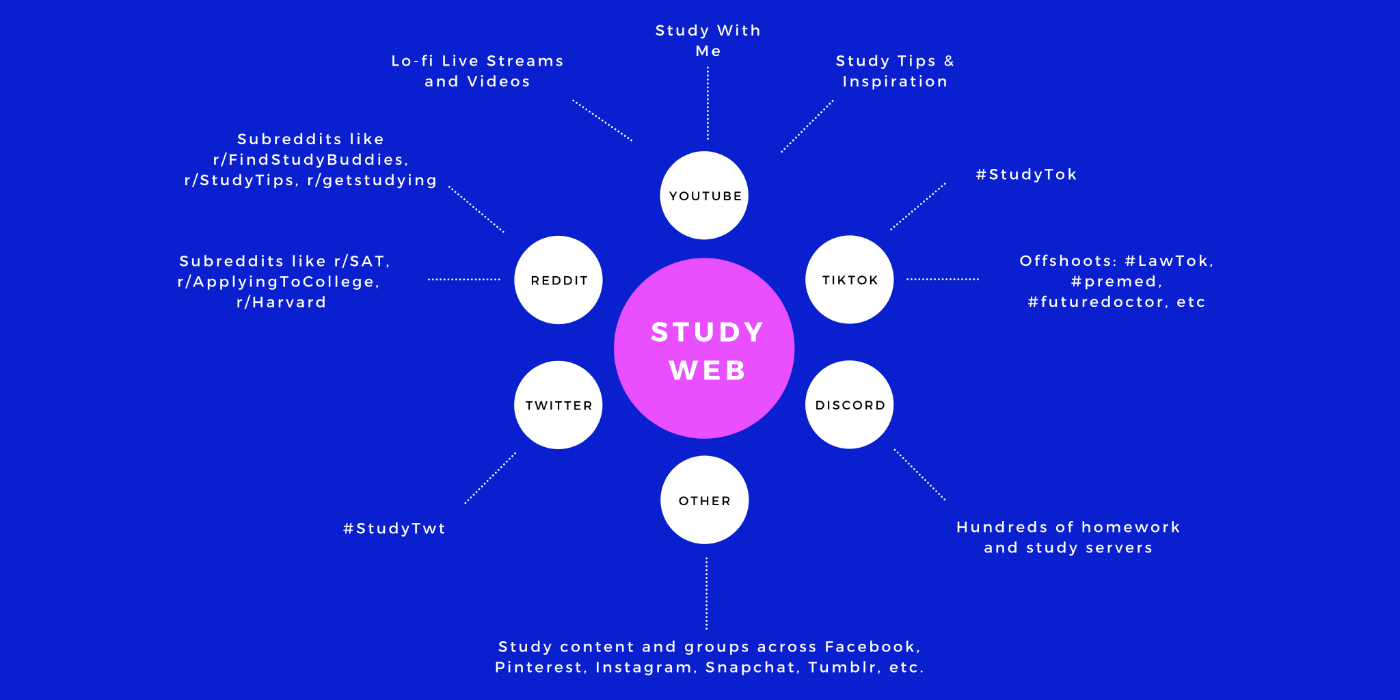

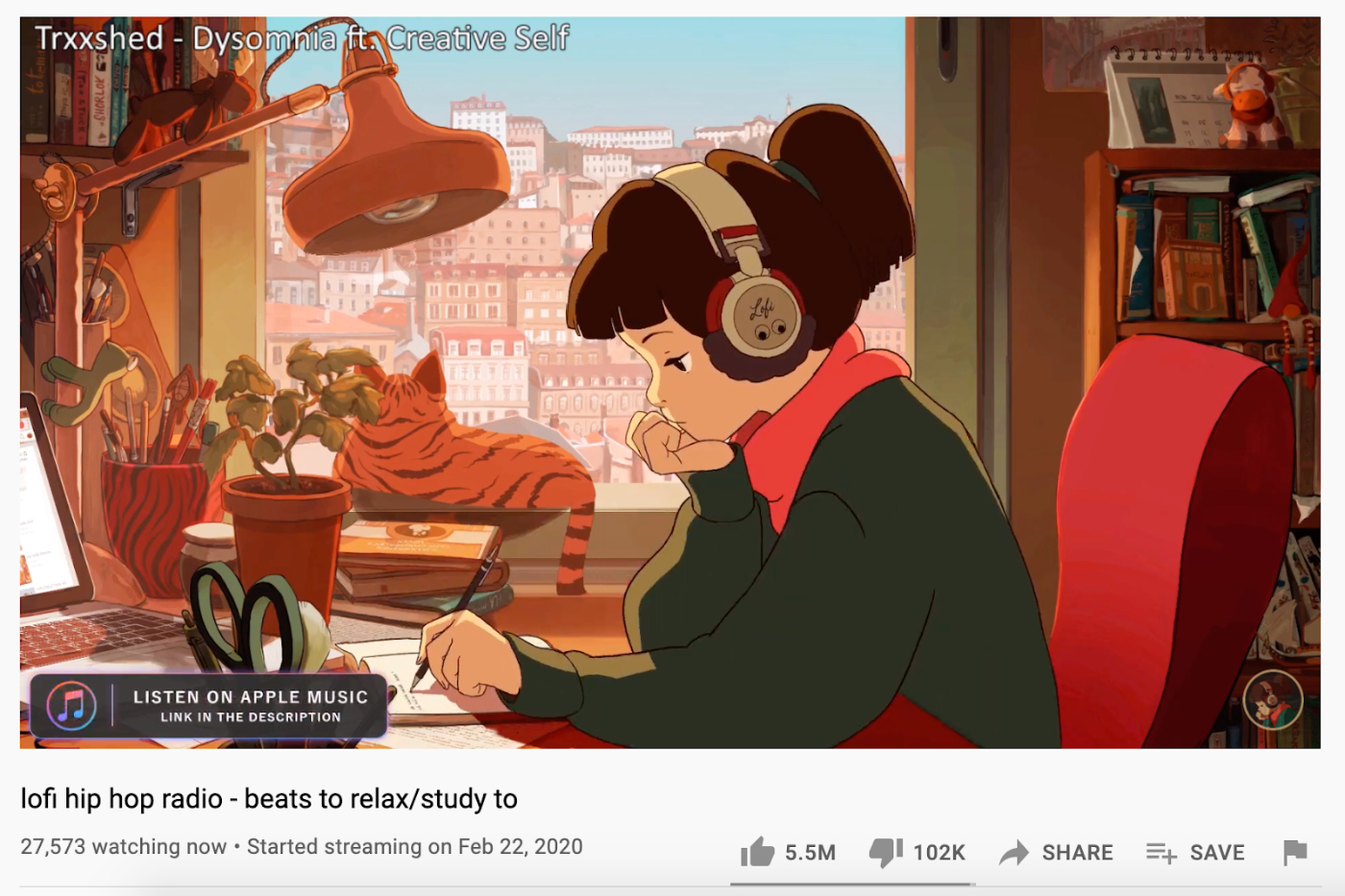
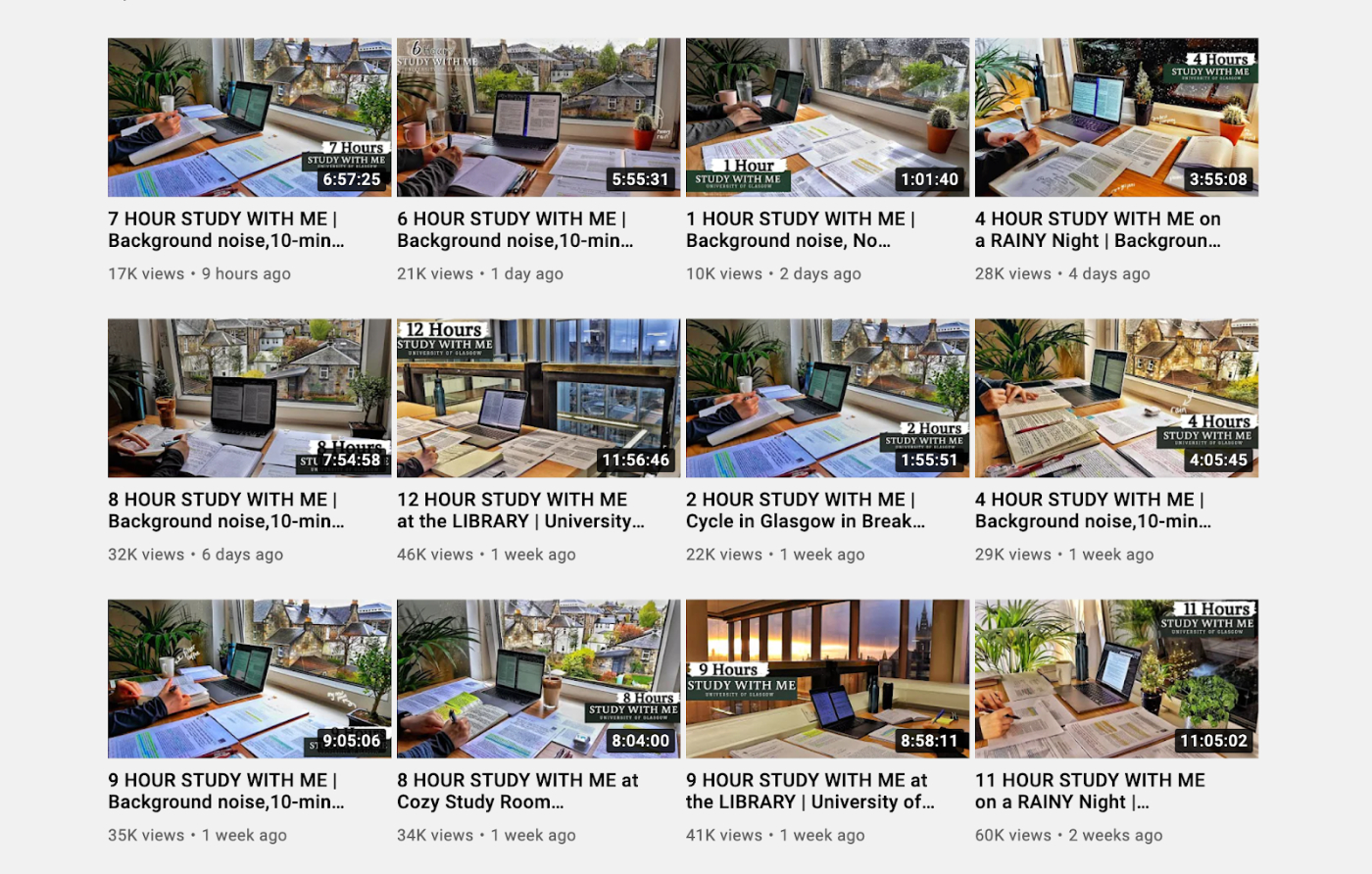
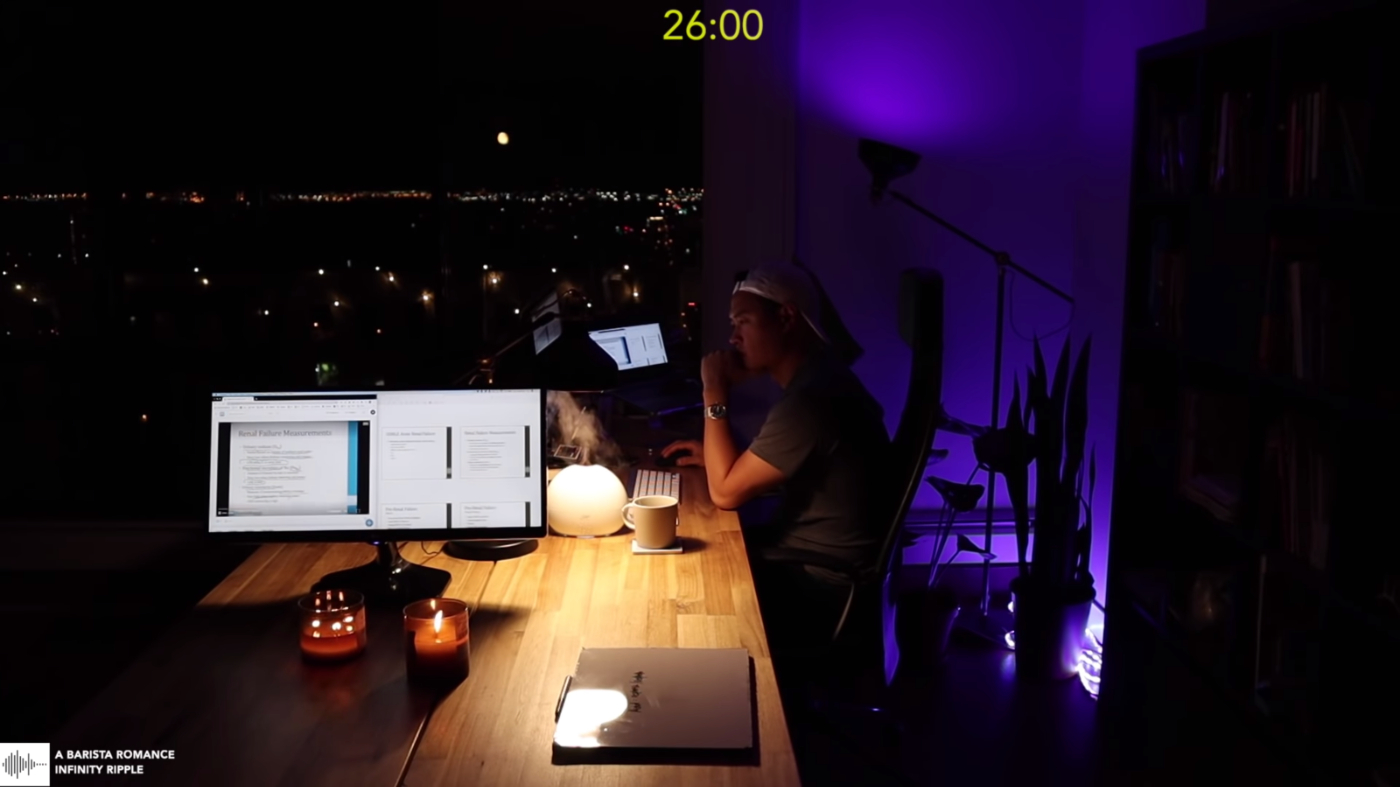
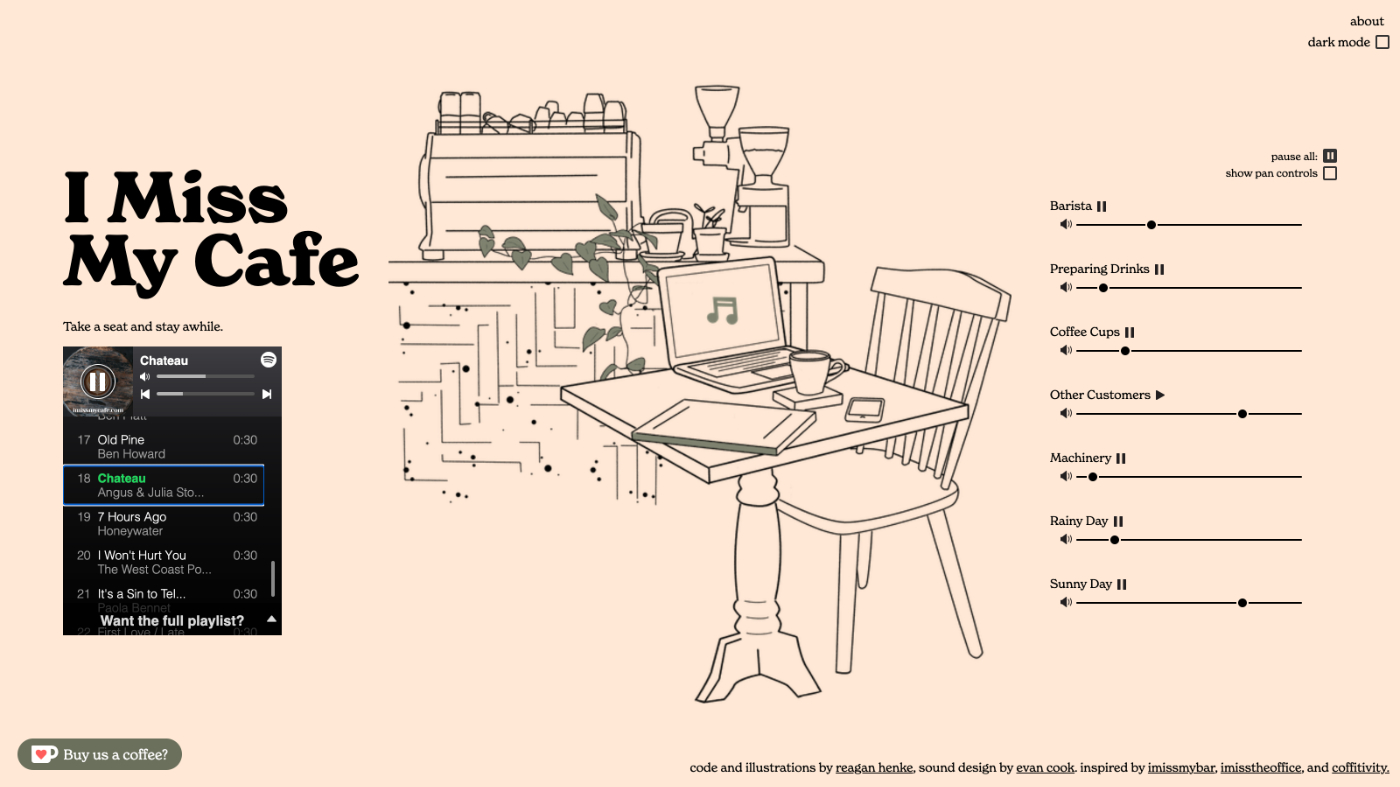




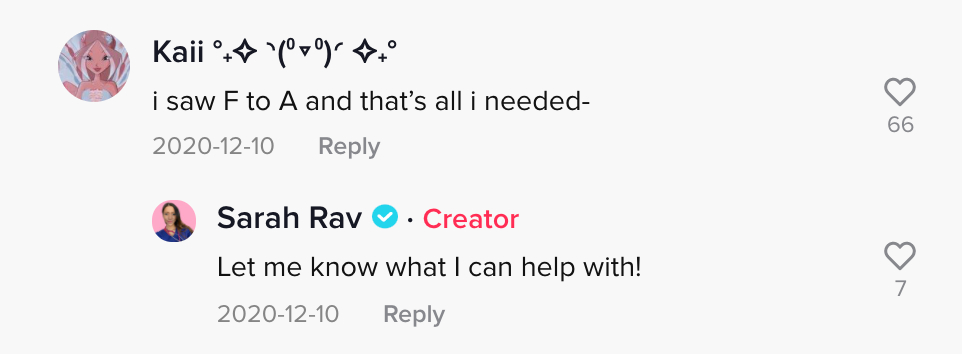
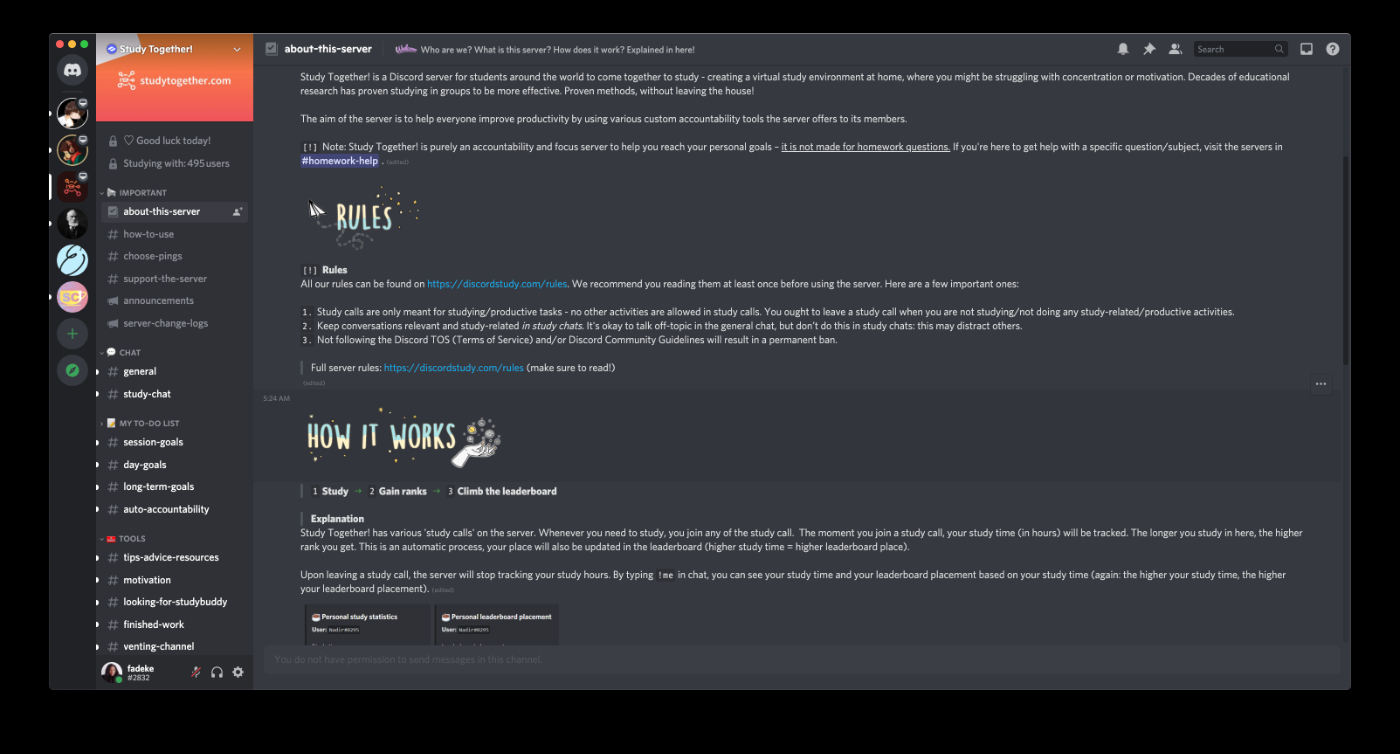



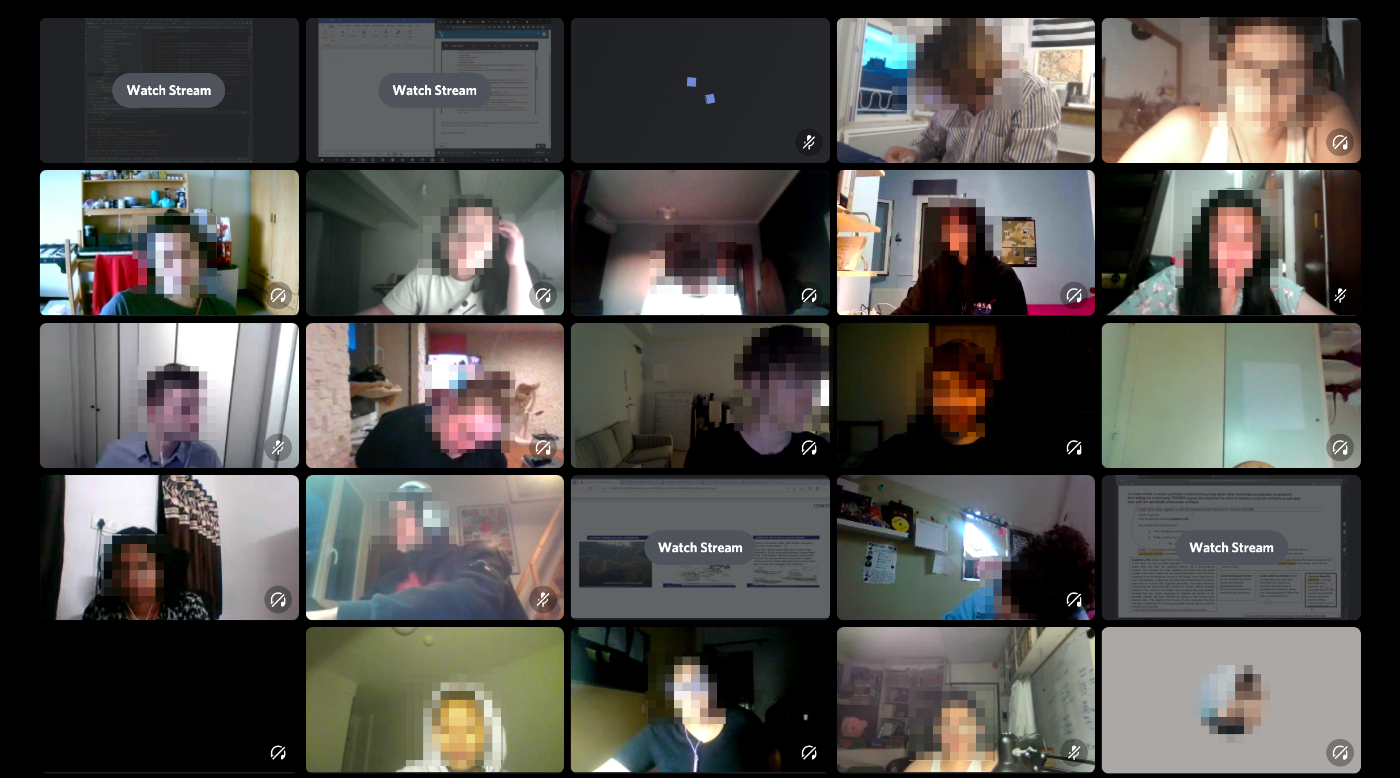







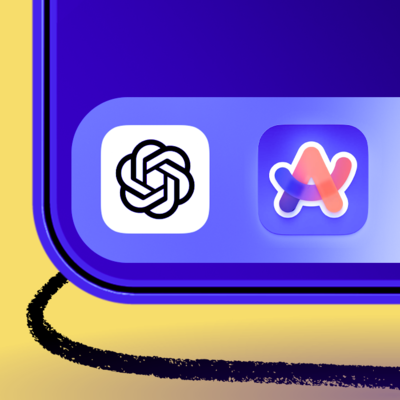



Comments
Don't have an account? Sign up!
Excellent article!
This is one of the most well-written articles that I have read in the last years. thank you.
Great read! Definitely something I would've loved as a student 😩
Great, engaging article about this community. It makes sense that this would be a thing in the current climate (greater adoption of online teaching and collective pandemic anxiety) but I didn't "see" it. You've made it more tangible!